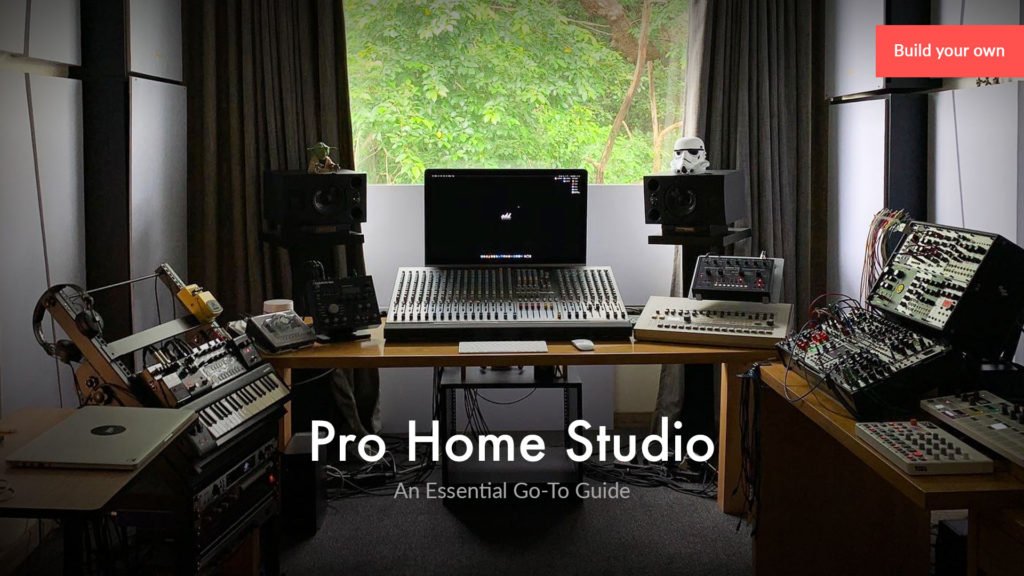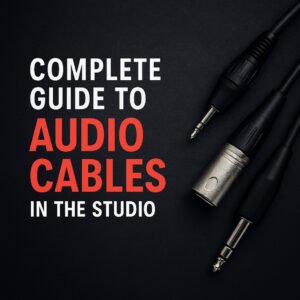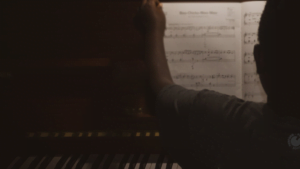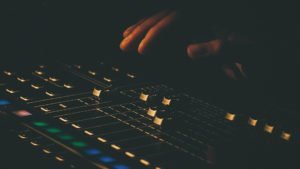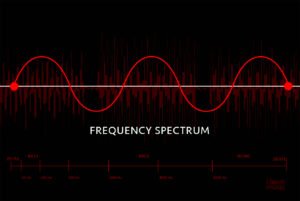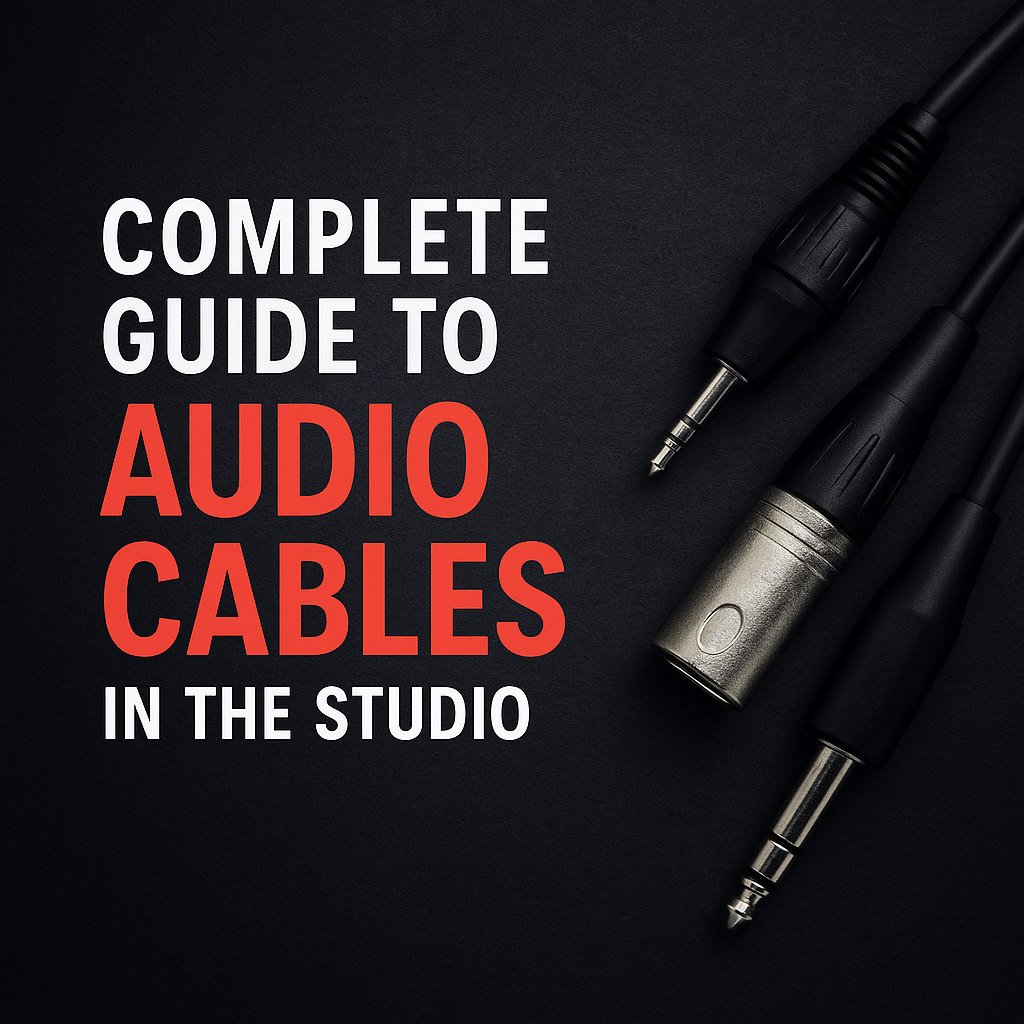Often one may confuse the term STUDIO with a recording studio. Especially for someone who is just starting out as a music producer. If you landed on this page as part of our three-part series, then skip the next part and get right to building your Pro Home studio. Else you may want to check out our earlier article; How to Build your own Bedroom Studio.
A Studio is one’s workspace that may or may not be acoustically treated. A dedicated space to set up and store equipment; or a makeshift space where you are practising your art form.
1. Purpose
2. Space and Location
3. Acoustics and Treatment
4. Furniture Placement
5. Gear and Equipment placement
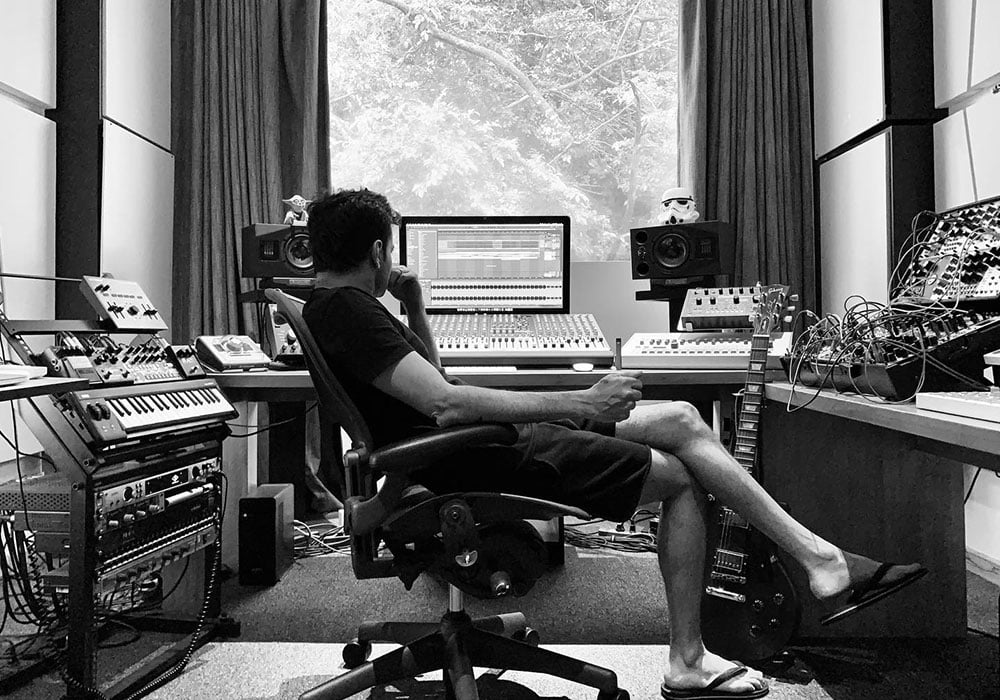
Building a Home Studio
STEPS TO BUILDING A HOME STUDIO
Purpose
A Home Studio is a Pro or semi-pro space; a dedicated room in your house, just for creating music. (i.e. Not in your bedroom!) A great space for Professional Producer/Performers for their home set-up.
Space and Location:
The home studio should preferably have a high ceiling and asymmetric walls. Enough space to fit in all the gear you need. Plan to record in the same room? Allocate adequate space for it, as well. Long rooms work better than square rooms. Choose a space that will isolate the Studio to avoid outside disturbance. An attic or basement or outhouse away from movement and disturbance would make a great home studio.
Furniture:
A home studio need not have a lot of furniture. The work desk or studio-desk and required stands for additional equipment will do. Adding some fabric-heavy furniture (like a couch) if space permits would help with dampening and sound absorption. Lighting the space with recessed lights would be ideal to avoid any vibration.
A work desk should be the standard height of 2ft 6in. Most producers prefer a longer wider tabletop to accommodate all the gear they want to keep. Some make the work desk ergonomic by curving the table so everything is within easy reach. Ready-made options are available but are as expensive as building one (in India).
Acoustic Treatment:
Depending on the location, you may consider building in a fair amount of acoustic treatment to get your room sounding right. Where a Home studio can achieve a great deal of sound absorption and isolation, it would require a considerable expense to completely soundproof the space.
a) Walls
If you are building a home studio you should consider building artificial or floating walls. These can be hollow wooden frames stuffed with insulation. Use them to shape the studio, to avoid parallel walls. Soft absorption materials like raw cotton or foam are a great DIY approach for insulation. Consider fire safety and treat the material with fire-retardant materials. A better alternative is Studio Foam and definitely a better way to go.

If constructing walls is not an option, well-placed Absorption panels would be a possible alternative. DIY kits for home studios with pre-fabricated panels ranging from 4-12 panels are easily available.
b) Floor and Roof
Acoustics on the floor and the roof will reduce slap echoes. Adding acoustic floor tiles or carpeting with a foam underliner would be a great addition to the acoustics. A high ceiling can accommodate acoustic panels, ceiling tiles or strategically placed foam stuck to the roof.
c) Ventilation
Air-conditioning at home is now a necessity. In a Home Studio, it can be a constant source of noise, especially if you are recording. It is a good idea to use a duct air conditioner where the fans and compressor are outside the studio. However, sometimes ducts make noise with the airflow as well. The best option is a silent, split air-conditioner.
Gear:
Everything one needs to make music, record it and mix it. If you are going to master your tracks yourself, then that too. Beyond the basics, gear is a personal choice, so let us just leave this topic open-ended, right here.
But beyond anything else, the Home studio needs to be a comfortable space; Where the music producer can spend time undisturbed, creating music.
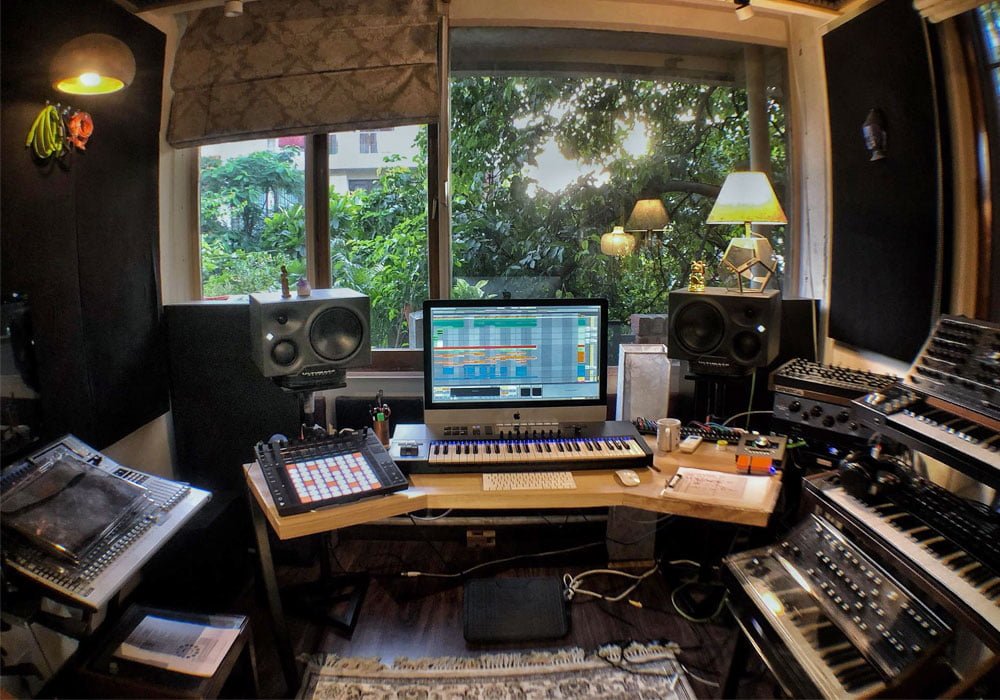
Home Studio Terms you should understand
Ergonomics is the process of designing or arranging workplaces, products and systems so that they fit the people who use them in the most efficient and comfortable manner.
Soundproofing requires the creation of a barrier that will not allow sound to pass. Sound requires air to travel and therefore true soundproofing requires an airtight space or vacuum barrier.
Soundproofing is an impossible feat to achieve unless one creates a room suspended in a vacuum. Well, not quite. You can create a room within a room and remove the air by filling it with other inert substances instead of a vacuum; which will not allow air or sound to pass through. (but it is expensive to execute).
-Arjun Vagale
Conclusion
In conclusion, the Home studio goes beyond the basics of a bedroom studio and is a personal space set up specifically for an artist/producer to get work done in the comfort of his home. It is not a commercial studio that is rented out for money; It’s not meant to be. If you want to make a Professional commercial studio, check out the 3rd leg of the how-to series: How to build a professional recording studio.
Chek out Oddshop.in for some awesome studio accessories.

